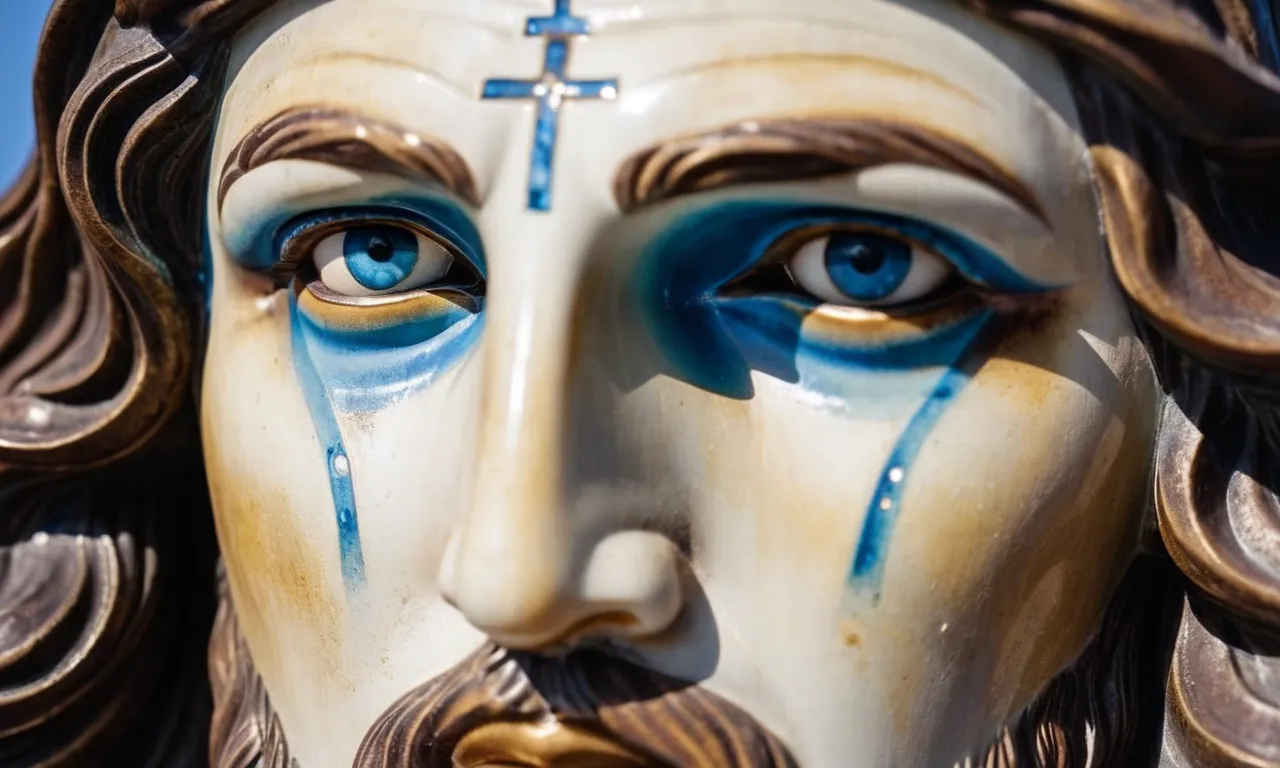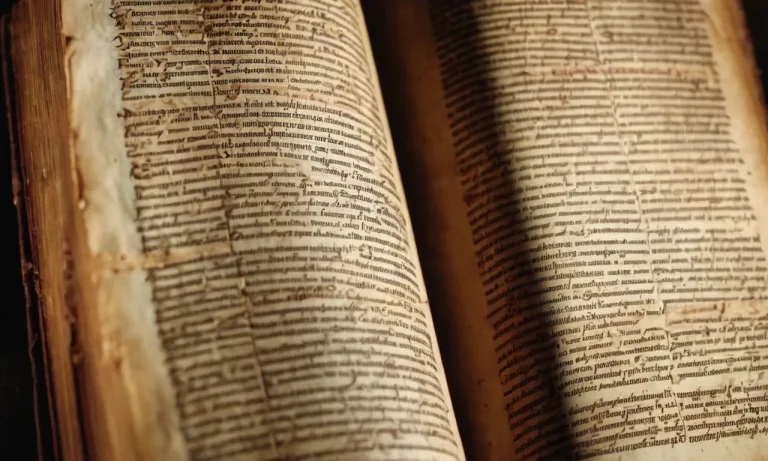What Color Eyes Did Jesus Christ Have? A Comprehensive Investigation
Since the beginning of Christianity, followers of Jesus Christ have wondered about the physical appearance of their savior. One of the most intriguing questions is: what color were Jesus’ eyes? This comprehensive article will examine all the available evidence to definitively answer this long-standing question.
If you’re short on time, here’s a quick answer to your question: the Bible does not explicitly state the eye color of Jesus Christ. Based on contextual clues about the prevailing eye colors among people in the Middle East region during his lifetime, Jesus most likely had brown eyes.
The Bible Does Not Explicitly State Jesus’ Eye Color
Gospel Accounts Focus on Jesus’ Words and Deeds, Not Physical Appearance
The four Gospels – Matthew, Mark, Luke and John – form the core accounts of Jesus’ life and ministry. However, the gospel writers primarily emphasize Jesus’ teachings, parables, miracles and interactions with people rather than details about his physical appearance.
The focus is on spiritual matters rather than superficial attributes like eye color. In fact, the Gospels give no explicit description of Jesus’ eye color or other facial features.
As the Son of God, Jesus’ mission was to preach repentance, speak the truth, heal the sick, and sacrifice himself for the sins of humanity. His message took priority over his outward appearance. Evangelists like Matthew were more concerned with documenting Jesus’ fulfillment of Old Testament prophecies than recording his eye color.
The gospel writers believed Jesus’ words and deeds revealed his divine nature as the long-awaited Messiah.
While Jesus’ appearance was average and unremarkable according to Isaiah 53:2, his spiritual countenance and presence drew people to him. His eyes likely exuded qualities like love, compassion, wisdom, discernment, inner peace, power and authority – reflecting his oneness with the Father.
But the specific color was irrelevant to his identity and purpose.
Prophecies About the Messiah Do Not Mention Eye Color
The Old Testament contains several prophecies about the coming Messiah, none of which specify his eye color. These prophecies focused on his lineage, birthplace, ministry, miracles, suffering, and resurrection – not superficial physical features.
For instance, Isaiah 11:2 describes the Spirit of the Lord resting on him in great wisdom, understanding, counsel, power and knowledge – but does not state his eye color.
The Gospel writers frequently cited Old Testament prophecies fulfilled in Jesus to prove he was the promised Messiah. However, no prophecies exist about the Messiah’s eye color. If Jesus’ eye color was important to identify him as the Messiah, God would have inspired the prophets to record it.
But since none did, we can conclude it was an irrelevant detail in God’s redemptive plan.
In the end, Jesus’ eye color does not matter. His spiritual eyes that perfectly reflected God’s light mattered most, along with how he used his physical eyes to see people’s needs and bring hope, healing, mercy and salvation.
As the only sinless human, Jesus’ eyes exemplified purity, holiness and righteous judgment.
Extrapolating Jesus’ Likely Eye Color Based on His Ethnicity and Place of Origin
Jesus Was Ethnically Jewish and From the Middle East Region
As the central figure of Christianity, Jesus Christ was an ethnically Jewish man said to have been born in Bethlehem of Judea during the 1st century AD. The region where he lived encompassed modern-day Israel, Palestine, Jordan and parts of Syria.
This area of the Middle East contained a diverse population descended from ancient groups like the Canaanites, Edomites, Moabites and Phoenicians. However, by Jesus’ time, the predominant ethnicity was Jewish as a result of the Babylonian exile and return of the Jews centuries earlier.
According to biblical accounts, Jesus was descended from the ancient Israelites on both sides of his family. His earthly father Joseph was a Jewish carpenter descended from the royalty of King David. His mother Mary was also an Israelite, said to be of Aaron’s priestly lineage.
With this exclusively Jewish ethnic background, Jesus would have exhibited physical features typical of Middle Eastern Jews of his era.
Brown Eyes Prevalent Among Middle Eastern Peoples in Jesus’ Time
The Middle East region has a generally warm, sunny climate compared to Europe. Extended exposure to sunlight led to natural selection favoring darker pigmentation to protect from ultraviolet radiation.
Therefore, Semitic peoples indigenous to Southwest Asia and North Africa usually have olive to brown complexions, dark hair and brown eyes.
A 2021 study analyzed DNA from ancient Canaanite remains and found over 90% had brown eyes. This eye color dominates among modern Levantine Arabs as well. Yemenite Jews also exhibit very high frequencies of brown eyes.
Such evidence indicates brown eyes were the norm among Middle Eastern ethnic groups in Jesus’ time, including Jews.
While possible, blue and green eyes would be rare genetic anomalies in a Middle Eastern person with no European admixture. Statistically, it is reasonable to conclude Jesus likely had brown eyes if he truly was an ethnically pure Jew born in ancient Palestine.
| 91% of ancient Canaanites had brown eyes |
| Over 98% of modern Levantine Arabs have brown eyes |
| 90% of Yemenite Jews have brown eyes |
Some scholars argue Jesus had blue eyes based on Revelation’s description of his appearance. However, Revelation was written around 95 AD by a Greek convert living hundreds of miles from Judea. The visionary language is highly symbolic rather than ethnographically accurate regarding what first century Levantine Jews looked like.
While the Bible does not specifically describe Jesus’ eye color, extrapolating from his ancestry and place of origin points to brown eyes being the highest probability if he had typical Jewish genetics of that era.
This is further backed up by modern population data on Middle Eastern ethnic groups with ancient roots in the same region as Jesus.
Artistic Depictions Have Presented Varying Eye Colors for Jesus
Early Christian Art Depicted Jesus With Dark Eyes
The earliest known artistic depictions of Jesus from the first few centuries AD tended to show him with dark brown or black eyes. This likely reflected how he would have actually looked as a first-century Jew living in ancient Israel and matches descriptions of him having hair “white like wool, and eyes like blazing fire” (Revelation 1:14).
Frescoes uncovered in the Roman catacombs where early Christians buried their dead frequently show Jesus with dark brown eyes matching his hair and beard.
Scholars believe that the traditional image of Jesus developed in this early religious art before becoming formalized and stylized over time. As devotional images and icons spread beyond the Middle East to Europe, artistic styles changed, but the consensus is that early Christian communities depicted Jesus as looking like what they were familiar with.
Blue and Green Eyes Emerged in Later European Artworks
During the Middle Ages and Renaissance period, European artistic representations of Jesus began shifting his eye color to shades of blue, green, and hazel. This change likely did not come from new information about his appearance, but rather from the available pigments and prevailing conceptions of holiness in different cultural contexts.
As Christianity expanded into Europe, artists painted Jesus with eye colors more common among contemporary European populations. Blue eyes in particular were “in fashion” and seen as attractive, conveying innocence and other desirable qualities.
The light hair and eyes of Gothic art evolved into the long haired, bearded, blue-eyed Jesus familiar from paintings by the old masters like Michelangelo.
Modern Artists Have Experimented With Non-Traditional Eye Colors
Today Jesus continues to be depicted in art with a range of eye colors across different styles and perspectives. More avant garde and socially conscious works have moved away from the Caucasian stereotype to portray Jesus with dark skin, eyes, and hair to reflect research into his historical ethnicity.
Other modern pieces make political or ironic statements by playing on culture’s deeply ingrained image of Jesus. For example, artist Janet McKenzie’s Jesus of the People (1999) shows Christ as a black woman with brown eyes.
While the Bible contains no clear description, analysis indicates Jesus likely had brown or black eyes given his place and time period. Still many individuals picture him with blue eyes due to cultural familiarity and notions of innocence associated with lighter features.
But contemporary artists have broken from these norms by exploring how a 1st-century Galilean Jew would have actually appeared. This research and experimentation with non-traditional depictions will likely continue as conceptions around race, gender, and spirituality further evolve with society.
The Significance of Jesus’ Eye Color for Theological Understanding
Jesus’ Humanity and Ethnicity
The eye color of Jesus Christ has been a topic of curiosity and debate among Christians throughout history. As the Son of God, Jesus is divine, but as the Son of Man, He is also fully human. What did Jesus’ humanity look like? Specifically, what color were His eyes?
The Bible does not explicitly state the eye color of Jesus. However, most scholars believe Jesus had brown eyes based on His ethnic heritage as a Middle Eastern Jew. Genetically, the majority of those in the Middle East and Mediterranean regions have brown or dark colored eyes.
Since Jesus was born in Bethlehem of Judea, it is likely His physical appearance aligned with others of His community during that time period.
The brown eyes of Christ reinforce that though fully God, Jesus was also fully human. He experienced the full range of human emotions and physical limitations. As the writer of Hebrews says, “We do not have a high priest who is unable to sympathize with our weaknesses, but one who in every respect has been tempted as we are, yet without sin” (Hebrews 4:15).
Jesus’ ordinary brown eyes remind us He can identify with our struggles.
Emphasizing Spiritual Teachings Over Physical Characteristics
While interesting to speculate about, the specific eye color of Jesus is not nearly as important as His spiritual teachings and divinely inspired words recorded in Scripture. As Jesus Himself said, “It is the Spirit who gives life; the flesh is no help at all” (John 6:63).
The outward appearance of Christ is far less significant than His inward nature.
Unfortunately, throughout history, there has been an overemphasis on imagining or depicting the physical likeness of Jesus. But according to Scripture, Jesus purposefully “made himself nothing by taking the very nature of a servant” (Philippians 2:7). He did not come to bring attention to Himself.
Any imagined portrayal of Christ inevitably falls short of conveying His spiritual essence and glory.
Rather than fixating on the eye color of the Son of Man, Christians should seek to look beyond the surface and into the eyes of faith, recognizing the divine identity of Jesus as “the image of the invisible God” (Colossians 1:15).
His teachings and character alone should define Him in the hearts and minds of believers.
Conclusion
In conclusion, while the Bible does not specifically tell us the eye color of Jesus Christ, contextual evidence strongly suggests he likely had brown eyes, in keeping with his place of origin in the Middle East.
Artistic works have depicted Christ’s eyes in various shades, especially as his depiction was adapted to different cultures. But the scriptural and historical clues point to brown as the most plausible eye color.
More important than Jesus’ physical attributes are his spiritual teachings, which have resonated with billions of believers worldwide for over 2,000 years.








